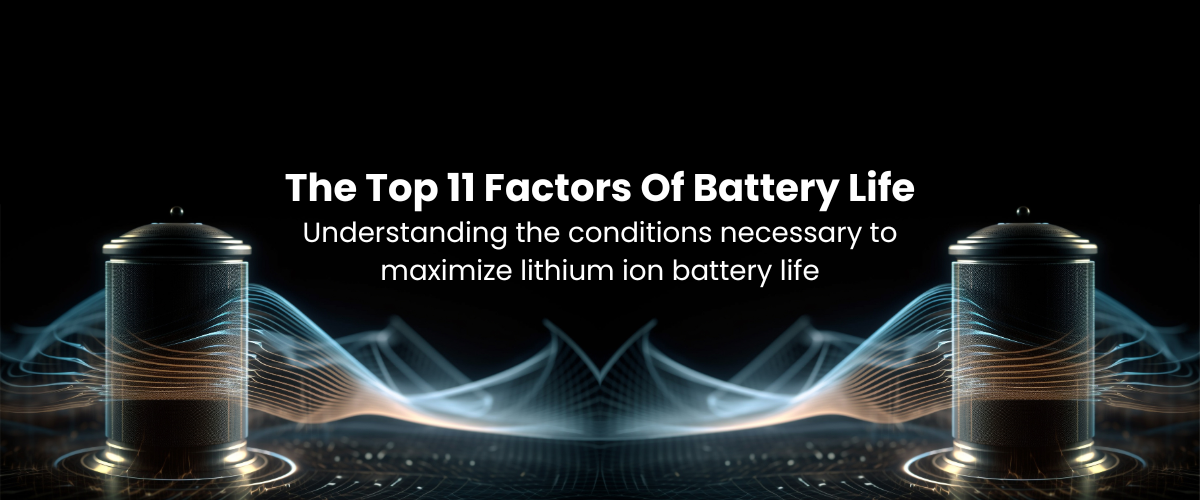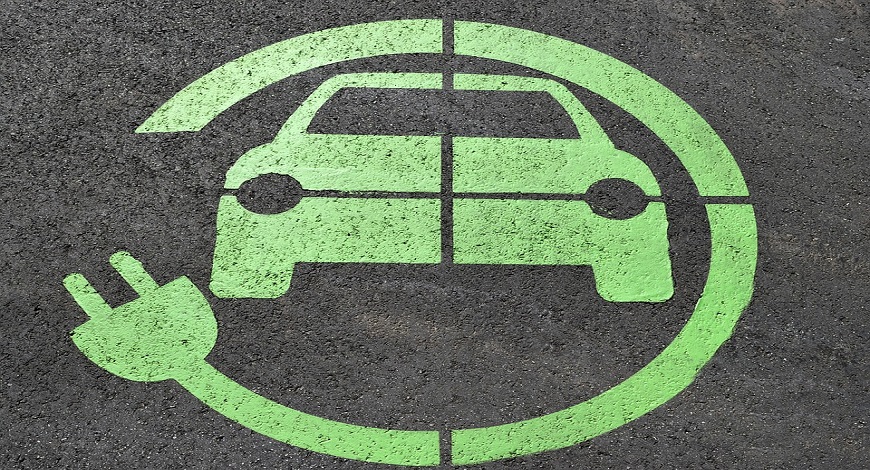
Lithium-ion batteries have emerged as the most popular type of rechargeable battery due to their high energy density and long cycle life. However, the longevity of these batteries and the factors behind them is a concern for consumers and industries alike.
The factors influencing the longevity of lithium-ion batteries are complex and multi-faceted. Lithium Ion battery life varies on battery chemistry, temperature, charge & discharge voltage, current, state of charge, battery management systems, manufacturing quality, battery design, use cases, recycling and second life, and regulatory and safety factors.
This edition of LOHUM Battery Decoded aims to examine these factors and their influence on the longevity of lithium-ion batteries, understanding the conditions necessary to maximize Lithium Ion battery life. By understanding these factors, we can drive innovation to optimize battery usage and storage conditions, improve battery performance, and contribute to the growth and development of sustainable energy storage.
Temperature management is crucial for battery performance. Innovations in this area include advanced thermal management systems that can maintain optimal operating temperatures. These systems use principles of heat transfer and novel battery structures- smart batteries with embedded sensors and actuators.
Future improvements could involve the development of materials and designs that are more resistant to temperature fluctuations, such as Titanium-based Lithium ion batteries.
The chemistry of a battery greatly influences its performance and longevity. Examples of existing innovation in battery longevity are NMC, LFP, and the emerging LTO battery chemistry. However, many promising improvements are emerging, such as batteries that use Lithiated Organic Cathode Materials, and the Lithium-air battery. Future research could focus on developing new chemistries that offer higher energy densities and improved safety.
The level at which a battery is charged or discharged also influences its longevity. This factor primarily relates to preventing overcharge and over-discharge, as that damages the lithium ion battery capacity and State of Health (SoH). Innovations in this area include advanced state-of-charge estimation techniques that use machine learning and advanced algorithmic and data-based processes.
Maintaining optimal charge and discharge voltages is essential for battery longevity, and this is typically done with a Battery Management System (BMS). Future improvements could involve the development of more intelligent BMS that can adapt to changing conditions and optimize charging and discharging processes in real time. Additionally, the development of more accurate and reliable state-of-charge estimation techniques is underway at centers of innovation.
Optimal storage conditions specific to each variety of Lithium batteries are fundamental for prolonging Lithium Ion Battery Life. Innovations in this area include advanced battery storage systems that can maintain customized storage and operating environments, such as vibration-proofing and cooling systems.
These systems use advanced materials and designs to enhance both the safety and longevity of battery energy storage. Future improvements could involve the development of more sophisticated storage systems that can adapt to changing conditions and optimize storage conditions in real time.
Battery Management Systems (BMS) play a crucial role in monitoring and controlling the battery’s operating environment, which can significantly influence the battery’s lifespan. Innovations in this area include the development of more intelligent BMS that use AI-powered algorithms and wireless connectivity to enhance battery performance.
Future improvements could involve the development of BMS that can adapt to changing conditions and optimize charging and discharging processes in real time.
High currents can affect the cycle life of lithium-ion batteries. When faced with abnormally high currents (higher than what the battery chemistry was designed for), the battery experiences mechanical stress, heat stress, parasitic side reactions that reduce lithium ion battery capacity, and lithium plating.
Innovations in this area include advanced state estimation techniques and intelligent charging methods that can optimize the charging & discharging currents. Ongoing improvements in this area involve the development of more sophisticated technologies to further optimize the current management based on historical performance and safety data collected from BMS software..
The battery materials and the manufacturing process can significantly vary the performance and longevity of lithium-ion batteries. Emerging innovations in this area include the use of high-quality recycled materials, and precise manufacturing processes to reduce defects and improve performance.
The development of advanced manufacturing techniques and increasing the use of more environmentally sustainable materials or secondary ecosystem materials has been ongoing across the industry.
The design of the battery, including the choice of cathode and anode materials, separator, and electrolyte, can influence the battery’s capacity, energy density, power density, safety, and lifespan. Innovations in this area include the development of new battery designs that optimize these parameters while utilizing recycled secondary ecosystem materials.
Future improvements could involve the development of designs that further increase energy and power density while maintaining safety and lifespan, as well as design-for-recycling practices.
Different applications (e.g., electric vehicles, grid storage, portable electronics) have different requirements and operating conditions, which can influence the battery’s longevity. For instance, an EV battery operating long hours in a hot city with a mixed terrain will experience more heat stress and lose longevity faster than a stationary energy storage battery plugged into a wind farm in the cooler countryside.
Innovations in this area include the development of batteries specifically designed for different use cases, along with battery second life repurposing. Future improvements could involve the development of more versatile batteries that can perform well in a wider range of applications, akin to design-to-recycle principles.
The potential for reusing or recycling lithium-ion batteries after their first life can extend their overall lifespan and reduce environmental impact. Innovations in this area include the development of efficient recycling processes and the exploration of second-life applications for used batteries. Future improvements could involve the development of more effective recycling technologies and the identification of new second-life applications.
At LOHUM, we prioritize and recommend EV battery reuse in second-life applications before battery recycling, as a significant percentage of the cells from used EV batteries are in good shape and ready to be repurposed and repackaged into stationary energy storage applications.
Recycling batteries with high purity and high yield output can trigger slowdowns in demand for intensive mining as a sustainably parallel source of energy transition materials.
Regulations and safety standards can influence the design and operation of lithium-ion batteries, which can indirectly affect their longevity. A theoretical example of this impact could be the disincentivization of some type of battery technology due to its volatility, even though that type may have been long-lasting.
Interestingly, some of the earliest Lithium battery designs back in the 20th century were abandoned or gained no traction because of high chemical activity that led to unsafe side reactions. Innovations in this area include the development of safer battery designs, implementation of rigorous testing standards, and end-of-life battery recycling under Extended Producer Responsibility.
While significant progress has been made in improving the longevity of lithium-ion batteries, there is still room for further innovation and improvement in each of these areas. Understanding these factors can help reduce the speed of battery failure and allow batteries to better serve their purpose. By continuing to explore new materials, designs, data, and technologies, we can further enhance the performance and longevity of lithium-ion batteries.
Related blogs
This entrepreneur wants India to make its own lithium-ion cells for electric vehicle batteries

Forbes India
Rajat Verma already recovers raw materials from used cells at his venture, LOHUM Cleantech. He wants to close the loop by making cells in India as well.
India needs integrated recycling and repurposing battery business model: Rajat Verma of LOHUM Cleantech

YOURSTORY
In an interaction with AutoStory, Rajat Verma, Founder and CEO of LOHUM Cleantech, speaks about building his company, and about battery manufacturing and repurposing as an industry.
Sourcing Raw Materials Is A Big Challenge In Li-ion Battery Space: Founder Lohum

Business World Disrupt
Recognized as ‘The Most Innovative Company of the year 2022’ by The Confederation of Indian Industry (CII), LOHUM is a producer of sustainable Li-ion battery raw materials
1800 572 8822
Email : enquiry@lohum.com
G98, Site, 5, Kasna, Block A, Surajpur Site V, Greater Noida, Uttar Pradesh 201306
LOHUM Cleantech Private Limited, Plot No. D-7 & 8, Site 5th, Kasna Industrial Area, Greater Noida, Gautam Budh Nagar, Uttar Pradesh – 201308
LOHUM Cleantech Private Limited, Plot No. O-17, Site 5th, Kasna Industrial Area, Greater Noida, Gautam Budh Nagar, Uttar Pradesh – 201308